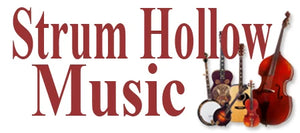A Little Bit of Music Theory (never hurt anyone?)
| Please refer to this chart as you read the information below | |||||||||||||||
| C Major Scale | C | W | D | W | E | H | F | W | G | W | A | W | B | H | C |
| Scale Steps | 1 | 2 | 3 | 4 | 5 | 6 | 7 | 8 | |||||||
| Pattern of Whole Steps (W) & Half Steps (H) Between notes | |||||||||||||||
|
The Major Chord or Triad is made up of steps 1, 3 and 5 of the scale......C E G |
|
| Use this rule of thumb to find the notes of a Major Chord | |
 |
Start with the key letter at the thumb and count up to find the names of the Third and Fifth notes. |
| The Minor Chord has the third step flatted.......C Eb G (b is used as the flat sign) Eb can also be called D# (# is the sharp sign) The two notes are the same they are enharmonic. The Seventh Chord has the 1, 3, 5 and the flatted 7th step of the scale......C E G Bb |
|
|
To determine the three Primary Chords in a key use the scale steps 1, 4, and 5 |
|
| Use this rule of thumb to find the Primary Chords of a key. | |
 |
Start with the key letter at the thumb and count up to find the names of the Fourth and Fifth chords. |
|
In the key of C the primary chords would be C F G. The 5 or the 57 chord (commonly designated with Roman numerals V, V7) tends to lead your ear back to the 1 chord. So, if you play G or G7 you want to resolve to C. |
|
|
You can use these simple rules in all keys. For instance, if you need the G scale you can write out the letters following the whole-step/half-step pattern. Remember there are only seven letters in our musical alphabet and there are no sharps or flats between B and C or E and F. So, in laying out the G scale, you find that you need more space between the E and F and less space between the F and octave G. In order to make the notes fit the pattern you need to sharp the F. One Sharp (#) is the key signature for the key of G. In written music you can usually find sharps or flats at the beginning of the staff. This is the key signature and governs the notes in the rest of the music. |
